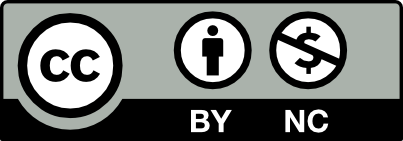Legionella Bacteria Activity investigation in Domestic Water Heating Systems: Tripoli-Libya as a case study
DOI:
https://doi.org/10.51646/jsesd.v10i2.114Keywords:
Solar water heating , Legionella Bacteria , Maximum daily temperatureAbstract
Legionella is a kind of bacteria that has been detected by many researchers in diffrent Water Heating Electrical (EWH) or solar (SWH) systems installed at various places. In the capital city Tripoli - Libya, most of water heater systems used are of electric type. Simultaneously, over 100 solar water heating (SWH) systems provided with electric heaters were installed under the supervision of the Centre for Solar Energy Research and Studies (CSERS) in the residential buildings in Tripoli in the period between (2000 and (2020). Ten hot water samples were collected from the outlet points in SWH systems and 43 water samples from diffrent
water draining points at Corinthia hotel and Palm City Residences water systems, for the purpose of legionella detection and enumeration in the systems. A questionnaire was designed and distributed to be filed by the 10 SWH system users whom the ten water samples were taken from. Th purpose was to collect information about the building, the hot water system, and the user’s satisfaction. As the water source is untreated ground water from private wells, analysis of Escherichia coli (E.coli), total Coliform bacteria and total bacterial count were conducted to see whether any other probable bacteria kind is available. According to the results obtained, both 43 samples and 10 SWH samples investigated are free of legionella bacteria, while the total bacteria count for 4 out of 10 SWH systems was less than 60 CFU/g. Ths was due to water temperature not lowered to the bacteria colonisation temperature, and the daily water temperature gained from solar energy was high enough to be more than 55°C for at least an hour daily and maximum daily temperature exceeds 60°C for 80 days in addition to summer time, which is high enough to destroy legionella bacteria
Downloads
Metrics
References
. K. Patel, P. Patel, and J. Patel, “Review of solar water heating systems,” Int. J. Adv. Eng. Technol., vol. 3, no. 4, pp. 146–149, 2012.
. M. Hazami, A. Riahi, F. Mehdaoui, O. Nouicer, and A. Farhat, “Energetic and exergetic performances analysis of a
PV/T (photovoltaic thermal) solar system tested and simulated under to Tunisian (North Africa) climatic conditions,”
Energy, vol. 107, pp. 78–94, 2016. DOI: https://doi.org/10.1016/j.energy.2016.03.134
. T. S. Vinubhai, R. J. Vishal, and K. Thkkar, “A review: solar water heating systems,” in Th National Conference on
Emerging Vista of Technology in the 21st Century, Limda, Vadodara, 2014, pp. 1–8.
. V. G. Shelke, C. V Patil, and K. R. Sontakke, “Solar Water Heating Systems: A Review ISSN (Online): 2347-3878,” Impact Factor, vol. 3, 2014.
. F. Mauthner, W. Weiss, and M. Spörk-Dür, “Solar Heat Worldwide: Markets and Contribution to the Energy Supply
,” 2016. [Online]. Available: http://www.iea-shc.org/data/sites/1/publications/Solar-Heat-Worldwide-2016.pdf.
. W. Weiss and M. Spörk-Dür, “Solar Heat Worldwide: Global Market Development and Trends in 2019,” 2020. [Online]. Available: https://www.iea-shc.org/Data/Sites/1/publications/Solar-Heat-Worldwide-2020.pdf. DOI: https://doi.org/10.18777/ieashc-shw-2019-0001
. I. M. Saleh, “Prospects of renewable energy in Libya,” Sol. Phys. Sol. eclipses (SPSE 2006), pp. 153–161, 2006.
. M. J. R. Abdunnabi, K. Dadesh, O. R. Mrehel, and N. El-shamekh, “Effct of full implementation of domestic solar water heaters on the electricity peak load in Libya,” Sol. Energy Sustain. Dev. J., vol. 5, no. 2, 2016. DOI: https://doi.org/10.51646/jsesd.v5i2.62
. M. Abdunnabi, I. Rohuma, E. Endya, and E. Belal, “Review on solar water heating in Libya,” Sol. Energy Sustain. Dev. J., vol. 7, no. 3 SE-Articles, Feb. 2021, doi: 10.51646/jsesd.v7i3.76. DOI: https://doi.org/10.51646/jsesd.v7i3.76
. W. J. Rhoads, P. Ji, A. Pruden, and M. A. Edwards, “Water heater temperature set point and water use patterns inflence Legionella pneumophila and associated microorganisms at the tap,” Microbiome, vol. 3, no. 1, pp. 1–13, 2015. DOI: https://doi.org/10.1186/s40168-015-0134-1
. E. Olsen, “2019 Legionnaires outbreaks: Another busy year for Legionella,” Siegel Brill PA, 2019. https://www.
legionnairesdiseasenews.com/2020/01/2019-legionnaires-outbreaks/.
. D. Chauhan and S. R. Shames, “Pathogenicity and Virulence of Legionella: Intracellular replication and host response,” Virulence, vol. 12, no. 1, pp. 1122–1144, 2021, doi: 10.1080/21505594.2021.1903199. DOI: https://doi.org/10.1080/21505594.2021.1903199
. A. Sawczyn-Domańska, “Detection of Legionella spp. and occurrence of virulence genes: lvh, rtxAand enhC in water samples from artifiial water systems,” Ann. Agric. Environ. Med.
. L. Altorkmany, M. Kharseh, A.-L. Ljung, and T. Staffn Lundström, “Experimental and simulation validation of ABHE for disinfection of Legionella in hot water systems,” Appl. Thrm. Eng., vol. 116, pp. 253–265, 2017, doi: https://doiorg/10.1016/j.applthermaleng.2017.01.092. DOI: https://doi.org/10.1016/j.applthermaleng.2017.01.092
. J. A. A. Engelbrecht, M. J. Ritchie, and M. J. Booysen, “Optimal schedule and temperature control of stratifid water heaters,” Energy Sustain. Dev., vol. 62, pp. 67–81, 2021. DOI: https://doi.org/10.1016/j.esd.2021.03.009
. A. Lo Nostro, E. Checchi, B. Ducci, and G. Pesavento, “Legionella contamination in hot water systems of hospitals, nursing homes, hotels, factories and spas in Tuscany-Italy,” Ital. J. Public Health, vol. 8, no. 1, 2012.
. I. Marchesi et al., “Effctiveness of diffrent methods to control legionella in the water supply: Ten-year experience in an Italian university hospital,” J. Hosp. Infect., vol. 77, pp. 47–51, Jan. 2011, doi: 10.1016/j.jhin.2010.09.012. DOI: https://doi.org/10.1016/j.jhin.2010.09.012
. M. T. Gevari, T. Abbasiasl, S. Niazi, M. Ghorbani, and A. Koşar, “Direct and indirect thermal applications of
hydrodynamic and acoustic cavitation: A review,” Appl. Thrm. Eng., vol. 171, p. 115065, 2020, doi: https://doi. DOI: https://doi.org/10.1016/j.applthermaleng.2020.115065
org/10.1016/j.applthermaleng.2020.115065.
. W. Mathys, J. Stanke, M. Harmuth, and E. Junge-Mathys, “Occurrence of Legionella in hot water systems of singlefamily residences in suburbs of two German cities with special reference to solar and district heating,” Int. J. Hyg. Environ. Health, vol. 211, no. 1–2, pp. 179–185, 2008. DOI: https://doi.org/10.1016/j.ijheh.2007.02.004
. W. Stone, T. M. Louw, G. K. Gakingo, M. J. Nieuwoudt, and M. J. Booysen, “A potential source of undiagnosed
Legionellosis: Legionella growth in domestic water heating systems in South Africa,” Energy Sustain. Dev., vol. 48, pp.
–138, 2019.
. P. Armstrong, D. Ager, I. Thmpson, and M. McCulloch, “Domestic hot water storage: Balancing thermal and sanitary performance,” Energy Policy, vol. 68, pp. 334–339, 2014. DOI: https://doi.org/10.1016/j.enpol.2014.01.012
. S. Amara, T. Baghdadli, B. Nordell, and R. Khimulu, “Solar system design for water treatment: antibacterial heat
exchanger (ABHE),” in Innovative Healthcare Systems for the 21st Century, Springer, 2017, pp. 167–180.
. [23] “Water Temperature Legionella,” Legionella.ae, 2017. https://legionella.ae/legionella-breeding-ground/watertemperature-legionella/ (accessed Nov. 08, 2020).
. S. Knapp and B. Nordell, “Energy-effient Legionella control that mimics nature and an open-source computational model to aid system design,” Appl. Thrm. Eng., vol. 127, pp. 370–377, 2017. DOI: https://doi.org/10.1016/j.applthermaleng.2017.08.006
. J. Li, X. Li, R. Du, Y. Wang, and J. Tu, “A new design concept of thermal storage tank for adaptive heat charging in solar heating system,” Appl. Thrm. Eng., vol. 165, p. 114617, 2020. DOI: https://doi.org/10.1016/j.applthermaleng.2019.114617
. “Procedures for the Recovery of Legionella from the Environment Centers for Disease Control and Prevention (CDC),” Atlanta, 2005. [Online]. Available: https://www.epa.gov/esam/procedures-recovery-legionella-environment.
. U. Fotadar, P. Zaveloff and L. Terracio, “Growth of Escherichia coli at elevated temperatures,” J. Basic Microbiol. An Int. J. Biochem. Physiol. Genet. Morphol. Ecol. Microorg., vol. 45, no. 5, pp. 403–404, 2005. DOI: https://doi.org/10.1002/jobm.200410542
. M. Abdunnabi, “Solar Water Heaters Test Field Project,” Tajoura, 2020.
Downloads
Published
How to Cite
Issue
Section
License
Copyright (c) 2022 Solar Energy and Sustainable Development Journal

This work is licensed under a Creative Commons Attribution-NonCommercial 4.0 International License.














